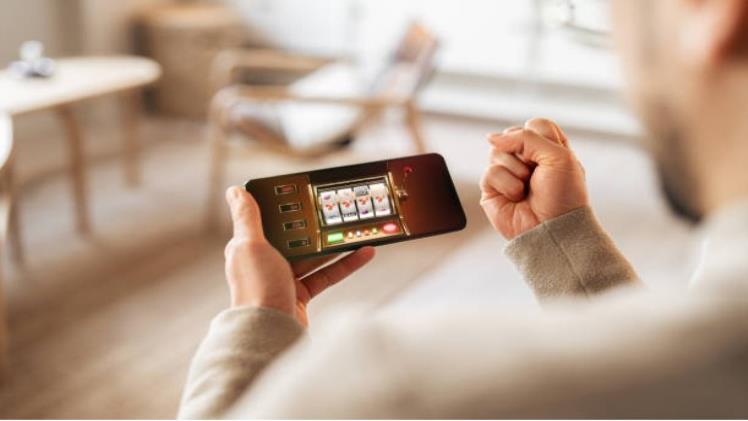Top 5 Color Prediction Game Mods and Community Hacks
Color prediction games have gained popularity among players who enjoy probability-based challenges and strategic decision-making. While these games often follow simple mechanics, modders and community enthusiasts have developed modifications and hacks that enhance gameplay, introduce new features, and create unique experiences. These innovations range from visual enhancements to strategic tools that help players refine their predictions. Exploring the top five color prediction game mods and community hacks reveals how players customize and improve their gaming experiences.
Custom Color Themes and Interface Mods
One of the most widely used modifications in color prediction games is custom color themes. Many players prefer interfaces that align with their visual preferences, leading modders to create personalized color palettes that replace standard game themes. These mods adjust background tones, button colors, and animation styles, making the game more immersive and visually appealing.
Some interface mods go beyond aesthetics by introducing accessibility-friendly themes that cater to players with color vision deficiencies. High-contrast designs and alternative color schemes improve visibility, ensuring that prediction mechanics remain engaging for a broader audience. The ability to modify interface visuals allows users to tailor their experience without altering core gameplay mechanics.
Probability and Pattern Analysis Tools
Community developers have introduced hacks that assist players in analyzing probability trends and historical patterns. These tools track previous game results, providing insights into sequences and statistical likelihoods. While prediction games rely on randomness, these mods help players refine their strategies by identifying potential patterns within randomized sequences.
Advanced versions of these tools incorporate predictive analytics, displaying probabilities based on previous selections. Players who use these hacks gain a deeper understanding of statistical distributions, allowing them to make more informed decisions. While not guaranteeing wins, probability analysis mods introduce structured approaches to decision-making, making gameplay more strategic rather than relying purely on instinct.
Multiplayer Collaboration and Group Prediction Mods
Traditional color prediction games focus on solo engagement, but community-driven mods have expanded multiplayer functionality. These modifications introduce shared prediction rounds, where teams collaborate on forecasting outcomes collectively. Players communicate through in-game chat features, exchanging insights and developing consensus-driven strategies.
Multiplayer mods enhance social interaction by integrating ranking systems, competitive leaderboards, and cooperative prediction challenges. Teams work together to refine accuracy rates, reinforcing strategic engagement while fostering friendly competition. The shift from isolated predictions to group-based dynamics introduces new layers of interactivity that strengthen player retention.
Customizable Bet Scaling and Risk Adjustment Mods
Some color prediction games include betting mechanics, where players adjust wager amounts based on confidence levels. Modders have developed hacks that allow users to customize bet scaling models, introducing dynamic risk assessment options. These modifications refine how players approach risk management, ensuring flexibility in decision-making.
Customizable risk settings enable players to adjust predictive strategies based on personal preferences. Some mods incorporate adaptive algorithms that modify wager amounts based on past results, creating intelligent scaling models that align with player tendencies. These enhancements provide structured control over risk exposure, reinforcing strategic play styles without disrupting core mechanics.
Enhanced Visual Effects and Animation Mods
Gameplay experience is often influenced by visual presentation, leading modders to develop enhanced animation effects that refine interactivity. These modifications introduce smoother transitions, dynamic color shifts, and interactive motion responses that make predictions feel more engaging.
Some visual mods integrate sensory feedback enhancements, including subtle glow effects when making selections or animated transitions that reinforce predictive momentum. These aesthetic improvements contribute to immersion, ensuring players remain engaged throughout each round. By modifying standard visual elements, these hacks introduce personalized enhancements that optimize entertainment value.
Conclusion
Color prediction game at Bdg game login mods and community hacks demonstrate how players innovate to enhance engagement, refine strategies, and introduce new interactive features. Custom color themes improve accessibility, probability analysis tools add strategic depth, and multiplayer modifications encourage collaborative forecasting. Risk adjustment hacks provide flexible betting mechanics, while enhanced visual effects improve gameplay immersion. As prediction games continue evolving, community-driven innovations will further shape interactive entertainment, ensuring players experience dynamic and personalized gaming environments. Modding communities remain central to refining prediction-based gameplay, offering creative solutions that redefine engagement possibilities.







